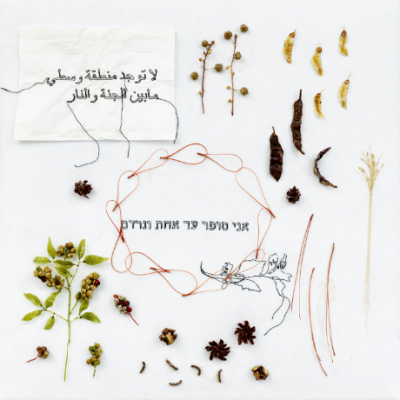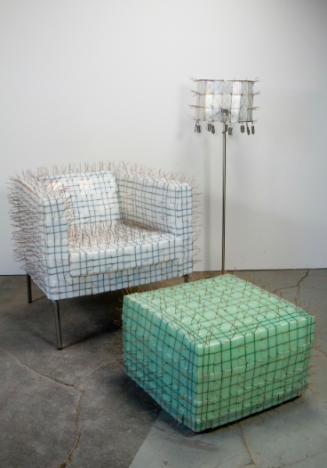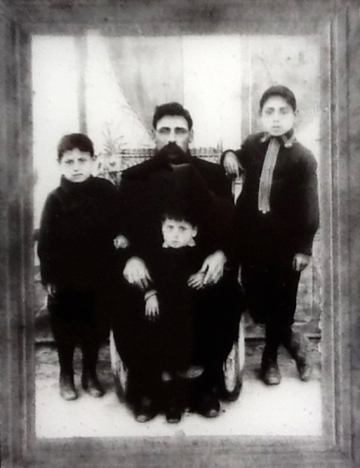EXHIBITION “WITHOUT CAMOUFLAGE. “
HAPPENINGText: Fuyumi Saito
In biology, invasive species adversely affect the environments in which they grow and reduce biodiversity. While the title might seem critical of the Aliyah (the immigration of Jewish peoples to Israel) and Zionist politics, her flameworked glass plants, often with brightly colored flowers, are beautiful and compelling. While her plants call to mind the Blaschkas’ botanical specimens, Kaffeman chooses to make plants with deviations from anatomical accuracy, which suggest the changes to identity that come from displacement and assimilation.

“ls–DK–ET–I-count-to-one–assemblage–original”, Dafna Kaffeman, 2014
Kaffeman’s intention is to remain objective, but to focus attention on the social and political complexities of life in Israel. Placed next to groupings of small drawings of flora and insects sewn on felt or rendered in pencil on paper, these boxed compositions of embroidered texts and drawings form environmental sculptures that are lyrical and poetic. For Kaffeman, however, there is a distinction between what is seen at first glance and the complex meaning revealed later after the viewer comprehends the text.

“Forever Happy”, Silvia Levenson, The Museum of Craft and Design, 2015
Levenson is best known for her cast-glass forms of mundane, com- mon objects such as furniture, clothing, dishes, and bottled medi- cines and restorative potions. Arranged on a shelf or in room-sized environments, they establish inviting domestic settings that become sites of impending disaster. Together, Everything Is Okay (Armchair), Life Is Wonderful (Pouf), and Luce Dei Miei Occhi (Standing Lamp), which are drawn from two versions of the series “Forever Happy,” respond to the notion of the home as the center of security, comfort, and happiness. Levenson clads furniture purchased from Ikea, a popular, international retailer known for its moderately priced Scandinavian product lines, with small iridescent glass tiles framed on all four sides by protruding copper wires, thereby imbuing the vignettes with tension and unease.

Detail of “The Chosen”, Silvia Levenson, The Museum of Craft and Design, 2015
Raised in a politically active Russian-Jewish family, Levenson is a passionate crusader against oppression and an ardent feminist. In 1981, she and her family were forced to flee Argentina—then under the control of the military dictator Jorge Rafael Vela—for Italy, where she remained and became an independent Studio artist. Trained in graphic design in Argentina, Levenson was first introduced to glass through a series of workshops that she attended in Europe in the late 1980s.
Mentored by Louise Bourgeois, whose New York salons she attended during the first decade of this century, Levenson learned from the French-American sculptor the importance of using art work to relive, express, and hence, come to terms with both one’s personal experiences and feelings and the dark histories of previous generations.
Read more ...





